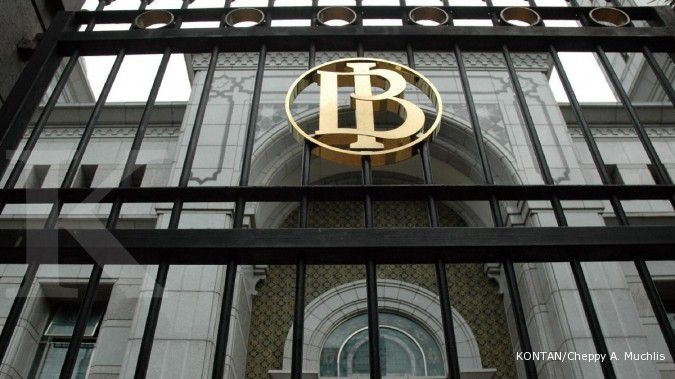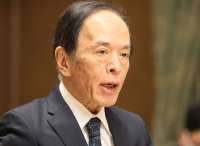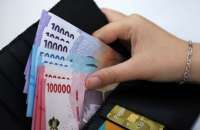JAKARTA. A commodity slowdown, combined with fiscal and monetary tightening, is predicted to keep Indonesia’s growth below trend in 2015.
Ongoing macro adjustments, however, may set the ground for stronger fundamentals and economic performance in the coming years, global financial firm Deutsche Bank (DB) concluded in its latest report.
The report, which was issued in late November, highlights economic potentials that the country holds for next year.
Taimur Baig, DB’s chief economist, wrote in the report that Indonesia might see its gross domestic product (GDP) reach 5 percent in 2015, the same level that the firm estimated in 2014.
The modest growth, he said, was overdue and should not be met with alarm.
Weak commodity export earnings and the strong import of fuel products will reduce net exports’ contribution to the growth, but consumption will still be positive throughout the slowdown period.
DB, which reportedly holds the largest amount of Indonesian government bonds, attributed the 5 percent growth estimate to improvements in fundamentals as well, especially those resulting from the recent adjustments to subsidized fuel prices.
“The decision to increase fuel prices was an unmitigated positive,” Baig said, adding that the macro impact of the combination of declining world prices and rising domestic prices would be immense.
DB estimates that the increase in fuel prices of Rp 2,000 (16 US cents) per liter, which brought gasoline prices to Rp 8,500 per liter and diesel to Rp 7,500 per liter starting Nov. 18, will halve the fuel subsidy bill to 1.6 percent of the GDP in 2015.
As a result, the total subsidy budget will fall to 2.5 percent of the GDP, if not lower.
Considering that Indonesia’s entire budget deficit tends to be around 2 to 2.5 percent of the GDP, while social spending amounts to only 0.9 percent of the GDP, the fiscal space resulting from the fuel-price hikes will be “remarkably large”, according to the report.
The government will then be able to channel the funds saved from the subsidy cut to other productive programs, which will be laid out in the upcoming revised state budget in early 2015.
In terms of inflation, DB assumes that the inflation rate will reach 8 percent in the first half of 2015, driven by a 250 basis points (bps) inflationary impact from the fuel-price hikes.
For the whole year, the rate is projected to revolve around 7 to 7.5 percent.
The report also lauded Bank Indonesia’s (BI) move to jack up its benchmark interest rate by 25 bps to 7.75 percent to cope with rising inflation. Widening of the interest rate corridor was rationalized as providing more room for liquidity management, Baig said.
“We think that the central bank likely has one more hike [25 bps] in store,” he said.
Once it is clear that the base effect-driven inflation is about to decline sharply in late 2015, DB says a window may open up for the central bank to cut rates in the fourth quarter.
Despite the positive opportunities ahead, the firm warns of several risks that loom next year. The bond market, it said, might see a sell-off next year as the monetary authority in the US geared up to normalize its policy rate.
It also points out the possibility of Indonesia’s exchange rate coming under pressure if its current account does not improve in the aftermath of the fuel- price increases.
As a result of the increase’s possible lingering effect, BI may be forced to apply another tightening measure. (Tassia Sipahutar)
RI holds bright outlook for 2015: Deutsche Bank
December 03, 2014, 02.44 PM
/2012/08/02/818321387p.jpg)
ILUSTRASI. Simak informasi lengkap jadwal dan rute Mandiri Jogja Marathon 2023
Source: The Jakarta Post
| Editor: Hendra Gunawan
Latest News
-
December 19, 2025, 05.35 AM
Bank of Japan Set to Raise Interest Rates to 30-Year High
-
December 18, 2025, 05.28 PM
Christmas Lights, World-Class Infrastructure, and Moscow’s MICE Ambitions
-
December 18, 2025, 05.17 PM
Moscow Accelerates Business Tourism Drive Through Meet Global MICE Congress 2025
-
December 18, 2025, 03.45 PM
Indonesia's October Palm Oil Stocks Fall 10% m/m On Higher Domestic Demand
-
December 18, 2025, 09.56 AM
GLOBAL MARKETS-Tech Jitters Dent Stocks Before Central Banks Take Centre Stage
-
December 18, 2025, 05.36 AM
GLOBAL MARKETS-Stock Indexes Fall on AI Angst While Gold and Silver Rise with Oil
-
December 17, 2025, 02.56 PM
Bank Indonesia Keeps Rates Steady, Focuses on Rupiah Stability
-
December 17, 2025, 12.16 PM
Indonesian Employers Group Says Proposed Minimum Wage Rise is Too High
-
December 17, 2025, 08.52 AM
GLOBAL MARKETS-Shares Hesitant After US Jobs Data, Oil Jumps on Venezuela Blockade











